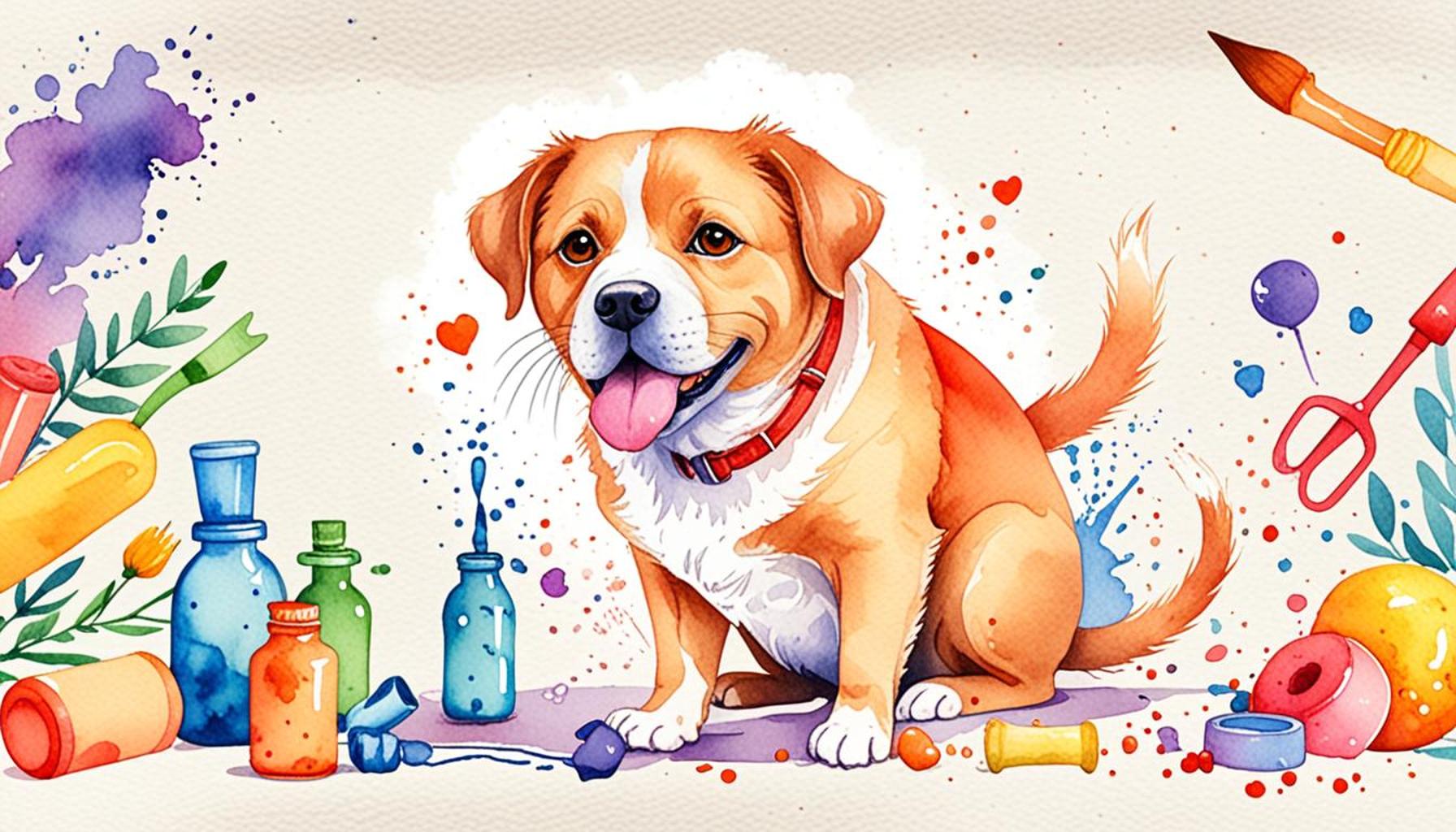Positive Training Techniques to Strengthen the Bond with Your Pet

A significant aspect of pet ownership is the bond formed between a pet and its owner, which is crucial for a fulfilling relationship. Building this connection involves understanding how your pet thinks and responds. By utilizing positive training techniques, you can enhance this relationship while ensuring your furry friend feels valued and understood. Employing methods such as reward-based training not only fosters trust but also promotes effective communication, making interactions more enjoyable for both you and your beloved companion.
Why Positive Training?
The essence of positive training techniques lies in their foundation of rewards rather than punishment. This approach nurtures an environment where pets intuitively comprehend what behaviors are desired. Research has shown that pets trained with positive reinforcement techniques tend to display a range of beneficial outcomes. These include:
- Increased obedience: Animals trained to respond to commands using treats or praises learn tasks more quickly and retain the information longer. For example, a study at the University of Massachusetts found that dogs trained with positive reinforcement were more likely to perform commands correctly compared to those that experienced aversive training methods.
- Lower stress levels: Positive reinforcement not only enhances learning but also contributes to a comfortable learning atmosphere. This method significantly reduces anxiety-driven behaviors, leading to a happier, more relaxed pet. Imagine the difference between a barking, fearful pup and a calm, obedient one during vet visits or outings.
- Stronger relationship: Training sessions infused with positivity become enjoyable experiences, cultivating an emotional bond. The shared excitement of learning and accomplishing tasks adds a unique layer to your relationship, allowing you both to appreciate each other more.
Examples of Techniques
Implementing positive training can take on various forms, each providing its own benefits and tools for effective learning. Some popular techniques include:
- Clicker training: This method involves using a specialized device that creates a clear sound to mark desired behaviors, like sitting on command. The click acts as a signal that your pet has done something right and will receive a reward, such as a treat or praise.
- Reward-based training: Offering treats or verbal affirmations reinforces good behavior. For example, every time your dog successfully executes a command like “stay,” they receive a small treat, enhancing their motivation to comply with commands.
- Play as a motivator: Incorporating playtime into training sessions can make learning fun. For instance, using a game of fetch as a reward for completing a trick can motivate your dog to learn quicker and associate the training with enjoyment.
Incorporating these techniques not only addresses behavioral challenges but also greatly enriches your connection with your pet. Such approaches ensure that each training session is meaningful, turning mundane tasks into exciting activities, and fostering a deeper understanding between you and your companion. The journey of pet training, when embraced positively, becomes a joyful adventure filled with reward, trust, and mutual respect.
LEARN MORE: Click here for effective training tips!

The Foundation of Trust: Building Blocks of Positive Training
Understanding the psychology of your pet is crucial when embarking on the journey of training. Animals, much like humans, thrive on positive interactions and the assurance of safety. Establishing trust through positive training is essential, as it lays the groundwork for a long-lasting bond and creates a welcoming atmosphere for learning. By prioritizing your pet’s emotional well-being, you can use training sessions as opportunities to connect deeply with your furry friend.
The Relevance of Consistency
One of the cornerstones of effective positive training is the principle of consistency. When you consistently reinforce desired behaviors, your pet begins to understand the expectations set before them. For instance, if you want your dog to sit before being fed, it is vital to maintain this routine. If one day you allow them to eat without sitting, while on another you enforce the command, your pet may become confused. Maintaining consistent rules helps clarify the behavior you wish to encourage and leads to quicker learning.
Engaging Your Pet’s Natural Instincts
Animals naturally seek to please their owners, and tapping into these instincts can be an effective technique to strengthen your bond. By utilizing your pet’s natural behaviors and instincts, you can make training sessions more productive. Here are some ideas on how to engage and motivate your pet during training:
- Use their favorite toys: Incorporating beloved toys as rewards during training can encourage your pet to participate actively. For example, if your dog loves a particular squeaky toy, use it as a reward after they successfully perform a trick.
- Vary the treats: Shifting between different types of rewards, like higher-value treats such as pieces of chicken or cheese, can make training more exciting. Experimenting with different flavors keeps your pet curious and motivated.
- Incorporate social interactions: Many pets, especially dogs, thrive on companionship. Rewarding good behavior with time spent playing together can enhance your pet’s commitment to listen and learn, solidifying your relationship through shared experiences.
The Power of Patience
Training is not achieved overnight; it requires patience and perseverance. Understanding that every pet learns at their own pace can prevent frustration for both you and your companion. If a particular command does not click immediately, try breaking it down into smaller steps. Celebrating small victories can nurture confidence in your pet and enhance their desire to engage with you further. Remember, each training session is not just about the command but about building the emotional connection that enhances the relationship.
By emphasizing the importance of trust, consistency, engagement, and patience, you lay the foundation for a successful relationship through positive training techniques. These principles create a nurturing environment, allowing both you and your pet to grow together, ultimately leading to a stronger bond that is rewarding for both parties. As you navigate training, keep in mind that it’s a shared journey—one that can be filled with joy and discovery.
| Advantage | Description |
|---|---|
| Strengthened Trust | Using positive reinforcement techniques builds a trusting relationship between pets and their owners. |
| Enhanced Learning | Positive techniques encourage faster learning and better retention, making training sessions enjoyable for both pet and owner. |
Exploring the realm of positive training techniques reveals numerous advantages that not only modify behavior but also deepen emotional connections with your pet. One prominent benefit is the creation of a strengthened trust bond. When pets receive consistent praise and rewards for desired behavior, their confidence grows, and they learn to trust their owners. This is crucial in establishing a safe environment where animals feel secure and loved.Moreover, these methods enhance learning by fostering a positive association with training sessions. Rather than instilling fear or anxiety, positive reinforcement motivates pets to learn new commands or tricks eagerly. This leads to a more enjoyable training experience for pets and their owners alike. The incorporation of games, treats, and praise results in quicker mastery of skills, making the overall process more effective and gratifying.In conclusion, the adoption of positive training techniques not only improves behavior but also enriches the emotional fabric of the relationship between pets and their owners. This exploration opens doors for enthusiasts to delve deeper into the world of nurturing bonds through effective and humane training strategies.
DISCOVER MORE: Click here for insights on balanced nutrition
Positive Reinforcement: The Heart of Training
Positive reinforcement is a training method that rewards desirable behavior, encouraging the repetition of those actions. It is a powerful approach that not only promotes learning but also strengthens the emotional bond with your pet. This technique is rooted in the idea that giving rewards—be it treats, praise, or affection—improves the likelihood of a behavior occurring again. Understanding how to implement positive reinforcement effectively can transform your training sessions into rewarding experiences for both you and your pet.
The Role of Timing in Reinforcement
Timing is a critical element in the application of positive reinforcement. To effectively reinforce a behavior, the reward must be given immediately after the desired action occurs. This helps establish a clear connection in your pet’s mind between the behavior and its positive outcome. For instance, if you are training a dog to “stay,” as soon as they remain in position for a few seconds, give them a treat followed by enthusiastic praise. This immediate feedback signals to your pet that they’ve done something right, positively reinforcing the action.
Setting Achievable Goals
Setting realistic and achievable goals during training can make a significant difference in your pet’s learning experience. Breaking down commands or tricks into smaller, manageable steps can prevent feelings of frustration. For example, instead of expecting your dog to execute a full “roll over” trick right away, you could start by rewarding them for simply lying down, then transitioning to rolling onto their sides, and finally completing the roll. Recognizing each success, no matter how small, is vital in keeping your pet engaged and motivated.
Incorporating Life Skills into Training
Beyond simple tricks, positive training can be extended to incorporate essential life skills that can enhance your pet’s quality of life. Teaching commands such as “leave it” or “come” not only nurtures obedience but also ensures your pet’s safety in various situations. Practicing skills in real-life scenarios—like calling your dog back from chasing a squirrel or teaching them to stay away from a dangerous item—provides invaluable lessons and builds trust in your leadership. The recurrent practice of these skills, coupled with positive reinforcement, fosters a deep sense of security and connection.
Interactive Training Elements
Interactive training methods, such as clicker training, can also strengthen the bond between you and your pet. A clicker can serve as a clear signal that marks the instant your pet performs the desired behavior, followed by a reward. This auditory cue eliminates ambiguity and can stimulate mental engagement for your pet, making the training process more fun and effective. Many trainers and owners in the United States have reported success using clickers, as it taps into pets’ problem-solving instincts further, encouraging them to think and respond during sessions.
By focusing on positive reinforcement, considering the importance of timing, setting reachable goals, incorporating life skills, and utilizing interactive training elements, you can create a fulfilling training experience. These techniques not only cultivate a well-behaved pet but also reinforce a reliable bond of trust and affection between you and your furry family member, ensuring that every training session is a shared adventure that brings you closer together.
DISCOVER MORE: Click here for tips on selecting the best food for your pet
Conclusion
In conclusion, implementing positive training techniques is not just about teaching your pet commands or tricks; it’s about fostering a profound connection built on trust, respect, and mutual understanding. As we’ve explored throughout this article, the heart of effective training lies in the principles of positive reinforcement, the critical importance of timing, and the value of setting achievable goals. These approaches not only facilitate a smoother learning process but also enhance the overall emotional bond between you and your furry friend.
Moreover, incorporating life skills into your training regimen ensures that your pet becomes well-adjusted and adaptable to various environments and situations, ultimately enriching their quality of life. It is equally important to make the training experience interactive and enjoyable—methods such as clicker training can effectively engage your pet’s mind, making learning a fun-filled adventure.
As a responsible pet owner, embracing these techniques paves the way for a harmonious relationship. Remember, each training session is an opportunity to deepen your bond while equipping your pet with valuable skills. By prioritizing these positive methods, you not only cultivate a well-behaved companion but also create lasting memories that strengthen the connection you share. So, step into training with positivity and patience; your pet will thank you with loyalty and love.



